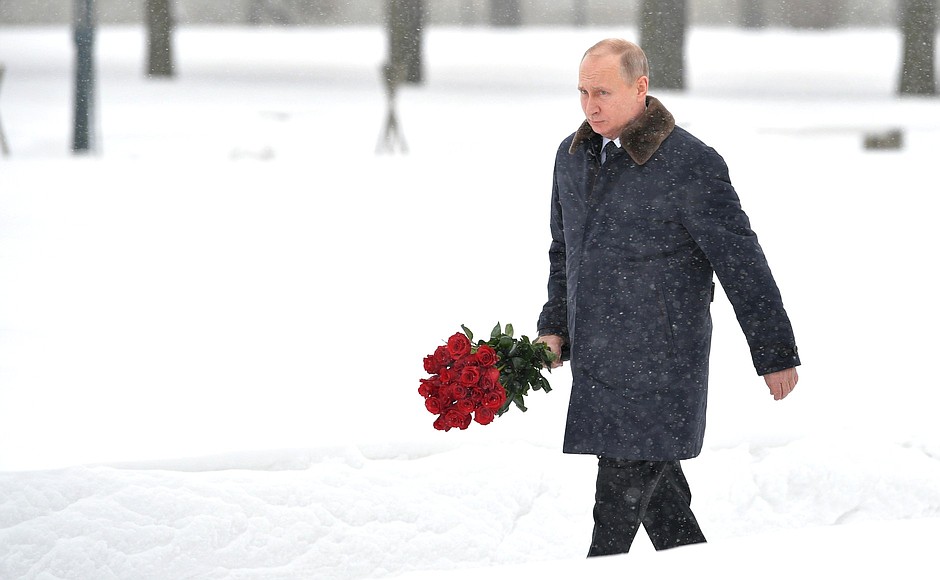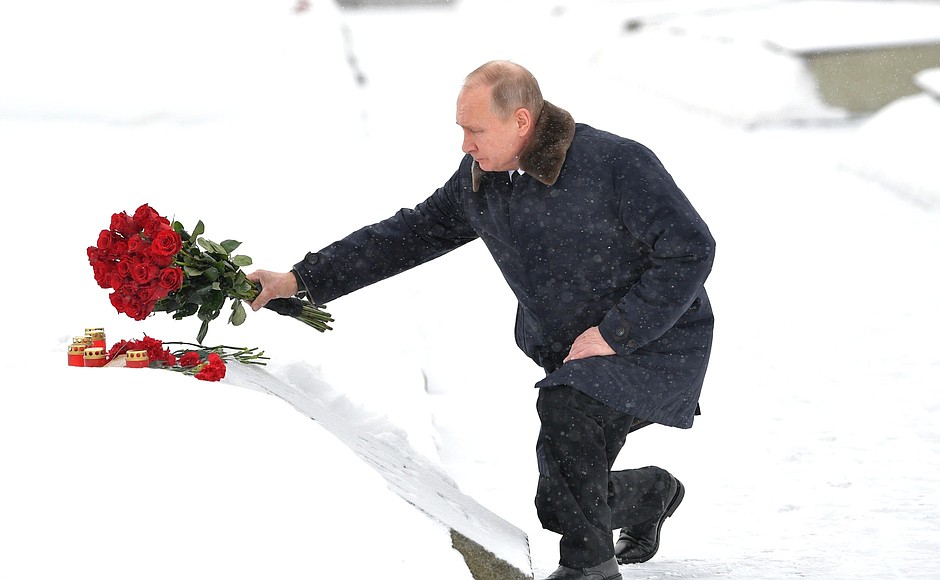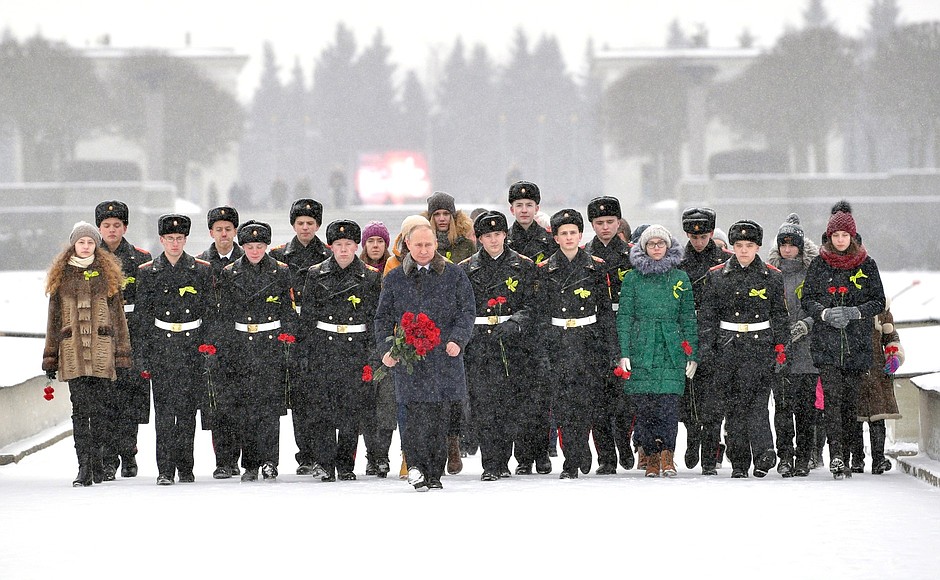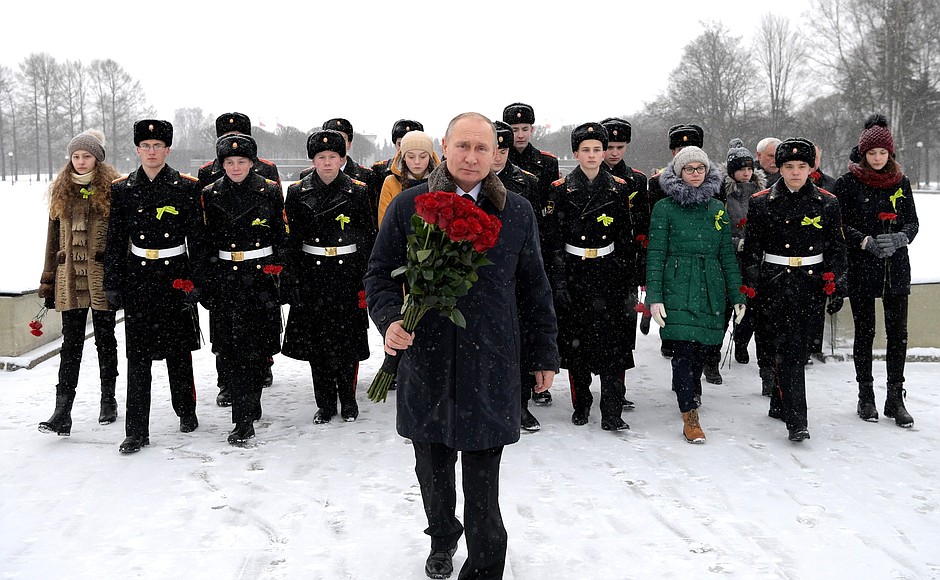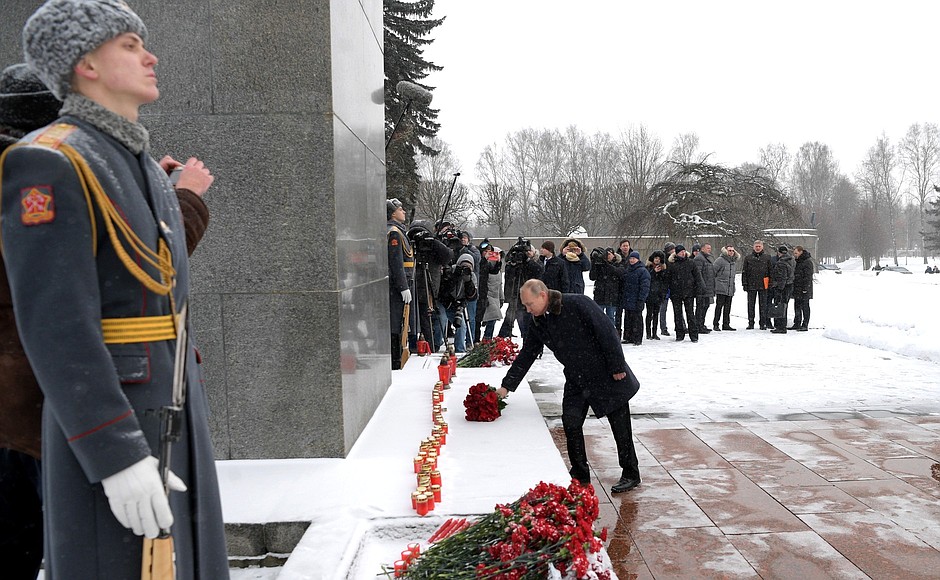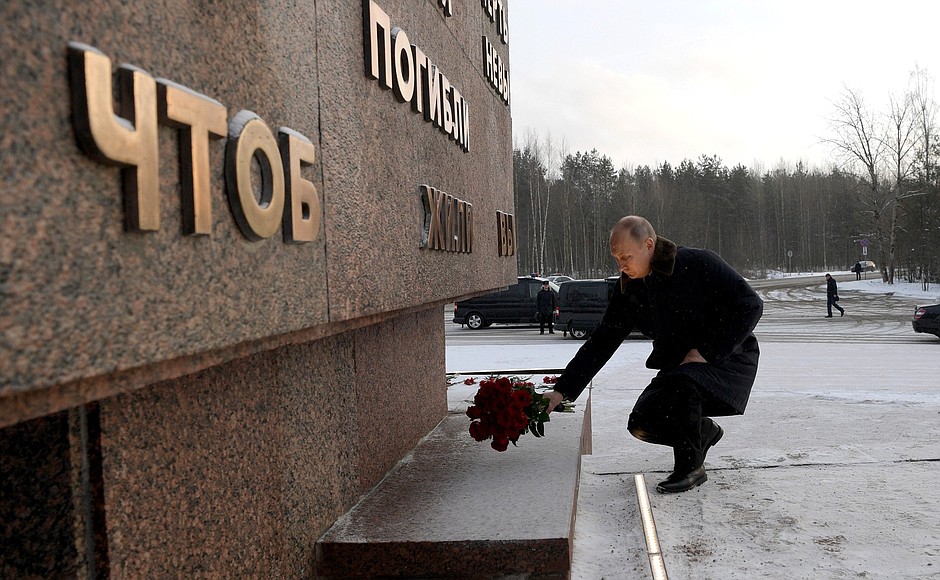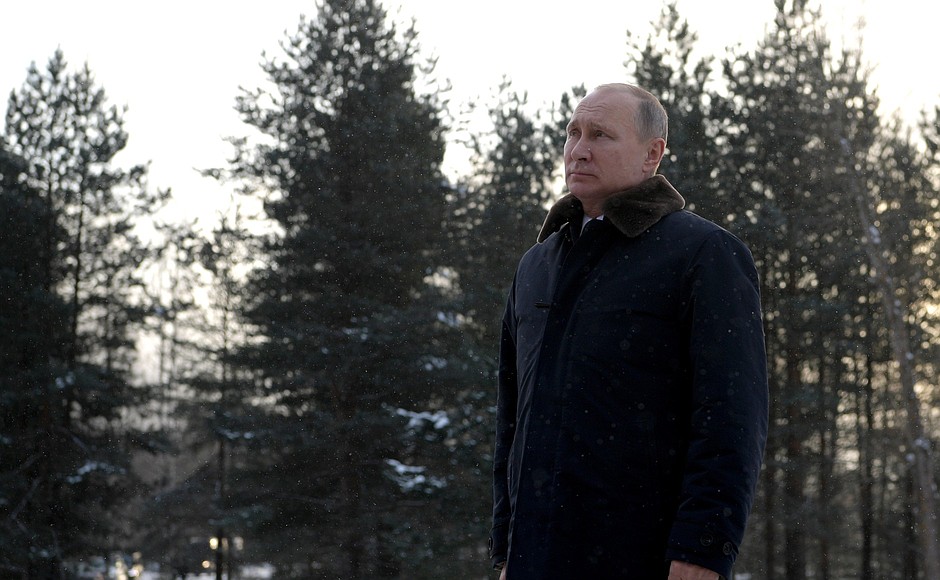Rallies and events are traditionally held in St Petersburg and the Leningrad Region on January 18 in memory of breaking the Nazi siege of Leningrad. Veterans of the 1941–1945 Great Patriotic War, representatives of youth organisations, and residents and guests of the city take part in the events.
The siege of Leningrad by Nazi troops lasted 872 days from September 8, 1941 to January 27, 1944.
Piskaryovskoye Memorial Cemetery is the largest cemetery of WWII victims. In 186 mass graves, 420,000 city residents are buried who died from starvation, bombing, and shelling, as well as 70,000 soldiers who defended Leningrad.
The Landmark Stone commemorates the soldiers who fought during the siege at Nevsky Pyatachok. Nevsky Pyatachok is the conventional designation of a bridgehead on the left bank of the Neva River, which the soldiers of the Leningrad Front defended during the Battle of Leningrad. Fighting here was conducted with the aim of breaking the siege.
Operation Iskra to break the siege of Leningrad took place on January 12–18, 1943 on Nevsky Pyatachok and triumphantly ended in a meeting of the Volkhov and Leningrad fronts near the village of Maryino. The siege was broken completely one year later on January 27, 1944.
